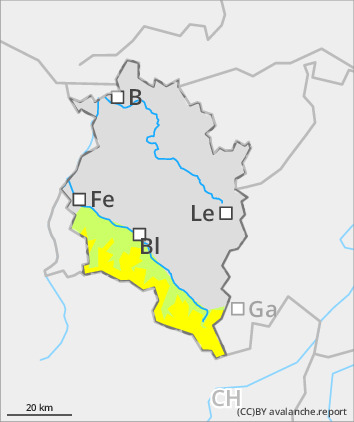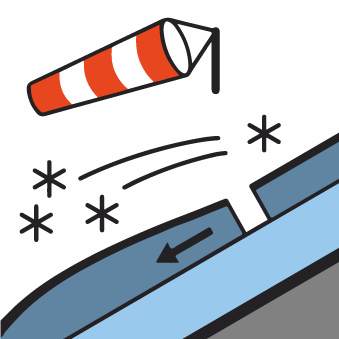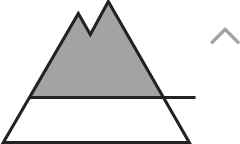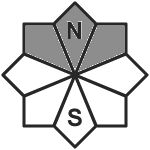
Danger level
 |

Caution: small-area drifts and increasingly frequent slides and small loose-snow avalanches
Avalanche danger is low. Isolated danger zones occur esp. in ridgeline terrain, on shady steep slopes and in extremely steep terrain. One sole skier can trigger a small-to-medium loose-snow or slab avalanche. Apart from the danger of being buried in snow masses, the risks of being swept along and forced to take a fall require adequate caution. On steep grass-covered slopes with sufficient snow on the ground or atop smooth ground, isolated small-to-medium glide-snow avalanches are possible. In rocky terrain, slides and small loose-snow avalanches are possible.
Snowpack
High-altitude shady slopes have small snowdrifts atop often faceted weak soft layers, bonding is often inadequate. At night a breakable crust forms, sometimes capable of bearing loads. On steep north-facing slopes, there is still powder. The old snowpack is well consolidated. On sunny slopes and at lower altitudes the fresh snow will fall on bare ground, the snow is often moist
Tendency
Transition to springtime conditions, including daytime rise in avalanche danger and increasingly frequent wet-snow avalanches




